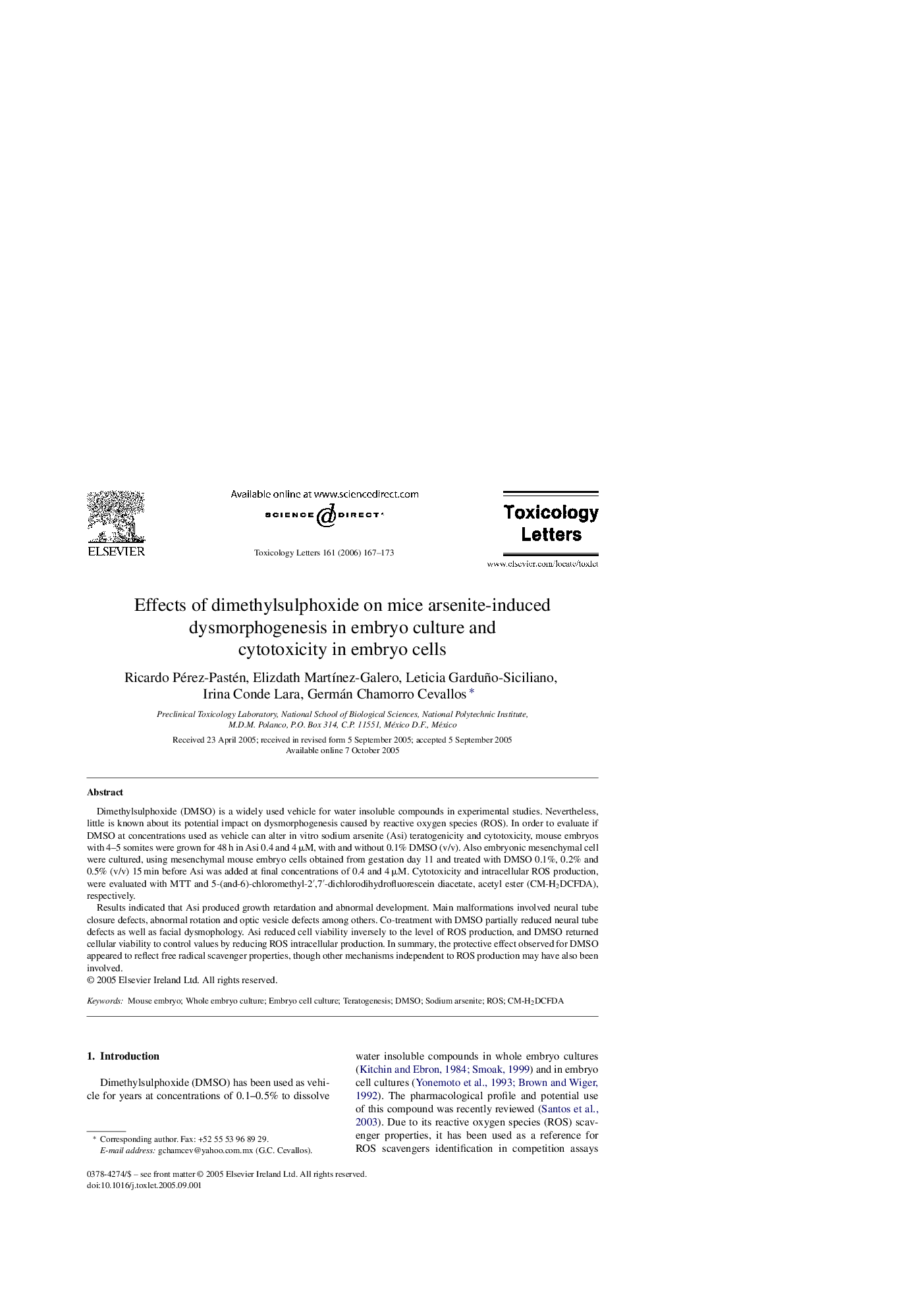| Article ID | Journal | Published Year | Pages | File Type |
|---|---|---|---|---|
| 2602372 | Toxicology Letters | 2006 | 7 Pages |
Dimethylsulphoxide (DMSO) is a widely used vehicle for water insoluble compounds in experimental studies. Nevertheless, little is known about its potential impact on dysmorphogenesis caused by reactive oxygen species (ROS). In order to evaluate if DMSO at concentrations used as vehicle can alter in vitro sodium arsenite (Asi) teratogenicity and cytotoxicity, mouse embryos with 4–5 somites were grown for 48 h in Asi 0.4 and 4 μM, with and without 0.1% DMSO (v/v). Also embryonic mesenchymal cell were cultured, using mesenchymal mouse embryo cells obtained from gestation day 11 and treated with DMSO 0.1%, 0.2% and 0.5% (v/v) 15 min before Asi was added at final concentrations of 0.4 and 4 μM. Cytotoxicity and intracellular ROS production, were evaluated with MTT and 5-(and-6)-chloromethyl-2′,7′-dichlorodihydrofluorescein diacetate, acetyl ester (CM-H2DCFDA), respectively.Results indicated that Asi produced growth retardation and abnormal development. Main malformations involved neural tube closure defects, abnormal rotation and optic vesicle defects among others. Co-treatment with DMSO partially reduced neural tube defects as well as facial dysmophology. Asi reduced cell viability inversely to the level of ROS production, and DMSO returned cellular viability to control values by reducing ROS intracellular production. In summary, the protective effect observed for DMSO appeared to reflect free radical scavenger properties, though other mechanisms independent to ROS production may have also been involved.
